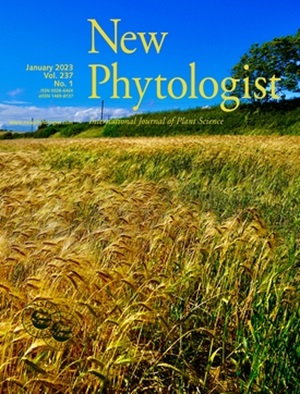Photosynthetic traits scale linearly with relative height within the canopy in an African tropical forest
IF 8.3
1区 生物学
Q1 PLANT SCIENCES
引用次数: 0
Abstract
- Understanding leaf photosynthetic traits and their variation in tropical forests is crucial for improving model predictions of forest productivity, and accurately representing the high functional diversity in these forests remains a challenge. Moreover, leaf photosynthesis data are lacking for the tropical forest of the Congo basin.
- We observed photosynthetic, chemical and structural leaf traits of 24 woody species in a Congolese tropical forest and studied their variance across functional guilds, within-tree crown positions and overall canopy positions defined by their relative height within the canopy.
- Guild and crown position jointly influenced leaf traits, with a significant effect observed (marginal R2 > 0.43). The traditional guild classification explained a significant portion of the observed interspecies variation, revealing a clear gradient from shade-tolerant to light-demanding species. Crown position significantly affected intraindividual leaf trait variability, with bottom crown leaves exhibiting trait values at least 19.3% lower than top leaves. Importantly, the linear relationship between relative canopy height and leaf traits emerged as a robust and continuous metric, effectively integrating both inter- and intraspecific variability.
- We conclude that while guild-based classifications provide a useful framework for identifying plant functional groups, relative canopy height offers a robust and quantitative approach for capturing overall canopy trait variation, valuable for modeling canopy processes.
求助全文
约1分钟内获得全文
求助全文
来源期刊

New Phytologist
生物-植物科学
自引率
5.30%
发文量
728
期刊介绍:
New Phytologist is an international electronic journal published 24 times a year. It is owned by the New Phytologist Foundation, a non-profit-making charitable organization dedicated to promoting plant science. The journal publishes excellent, novel, rigorous, and timely research and scholarship in plant science and its applications. The articles cover topics in five sections: Physiology & Development, Environment, Interaction, Evolution, and Transformative Plant Biotechnology. These sections encompass intracellular processes, global environmental change, and encourage cross-disciplinary approaches. The journal recognizes the use of techniques from molecular and cell biology, functional genomics, modeling, and system-based approaches in plant science. Abstracting and Indexing Information for New Phytologist includes Academic Search, AgBiotech News & Information, Agroforestry Abstracts, Biochemistry & Biophysics Citation Index, Botanical Pesticides, CAB Abstracts®, Environment Index, Global Health, and Plant Breeding Abstracts, and others.
 求助内容:
求助内容: 应助结果提醒方式:
应助结果提醒方式:


